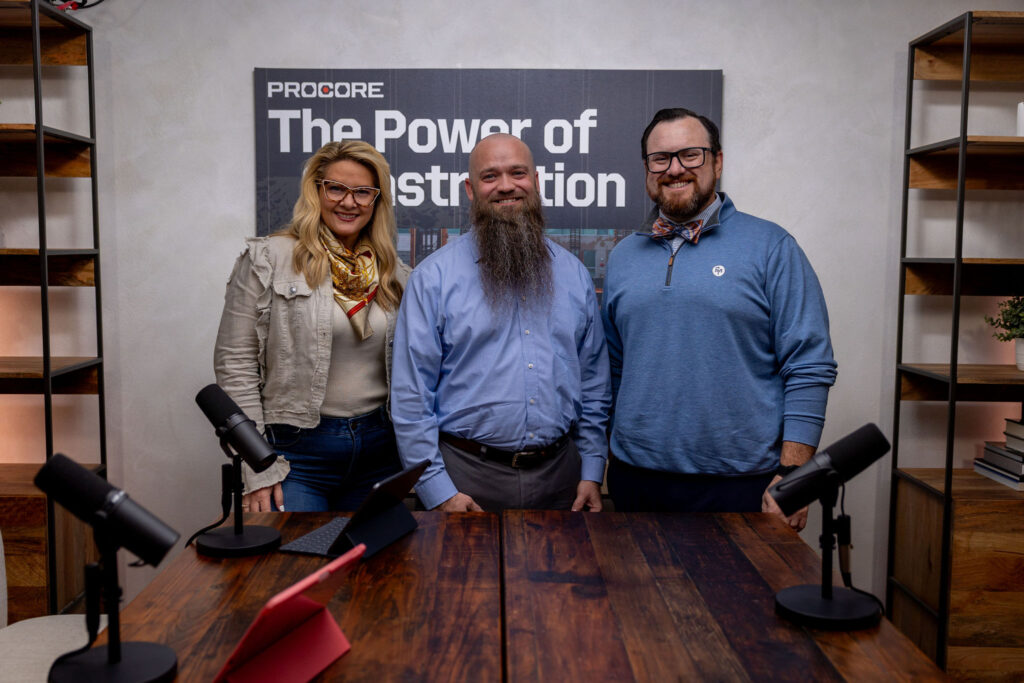From Construction Startup to Billion-Dollar Scale
Dustin Burns joined McCownGordon in 2005 when the company was just 30 employees—essentially a construction startup. Over nearly two decades, he has been instrumental in scaling the business from $50 million to nearly a billion dollars in revenue while maintaining a strategic focus on cloud-based technology solutions rather than building internal IT infrastructure.
The Philosophy: Construction Company, Not Tech Company
Burns emphasizes a fundamental principle that has guided McCownGordon's technology strategy: they are a construction company that leverages technology, not a technology company that happens to build. This philosophy drives their decision to rely on best-in-class SaaS solutions rather than developing proprietary systems, allowing the team to focus on what they do best—building.
99% Cloud-Based: The Ultimate Scalability Strategy
McCownGordon operates with 99% of their applications in the cloud, with only one on-premise application remaining. This strategic decision enables the company to scale to new regions and markets without massive IT infrastructure investments, while ensuring consistent user experiences across all locations and reducing friction for remote and mobile workers.
Tech Stack as Competitive Talent Advantage
Burns reveals how McCownGordon's modern, integrated technology stack serves as a powerful talent attraction and retention tool. By providing employees with smooth, efficient systems that eliminate frustration and redundant data entry, the company creates an environment where workers can focus on meaningful, value-added activities rather than battling with clunky technology.
Automation and the Labor Shortage Reality
With the construction industry facing a 600,000-person labor shortage, Burns argues that automation isn't optional—it's essential. The conversation explores how automation enables scaling revenue without proportionally increasing headcount, particularly in back-office operations, while maintaining quality and profitability in a high-risk, low-fee industry.
AI Implementation: Starting with Simple Wins
Rather than building custom language models, McCownGordon leverages AI capabilities built into their existing partner platforms like Microsoft Copilot. Burns shares real-world examples, including how email summarization has saved superintendents 15-20 minutes per complex email thread, allowing them to spend more time on job sites rather than behind computers.
From Prototypes to Scale: The Robotics Challenge
The discussion covers McCownGordon's decade-long experience with robotics, starting with drones in 2015. Burns addresses the challenge of moving beyond prototype deployments to enterprise-scale robotics solutions, emphasizing the need for consistent, repeatable use cases across multiple project types and the importance of safety-first implementations.
Data as the New Concrete: Building Information Infrastructure
Burns explores the concept of data as construction's foundational material, emphasizing the critical importance of structured, high-quality data. The conversation covers his vision of executives starting their day by asking AI systems about their top three most risky projects and receiving actionable solutions—a future state that requires robust data infrastructure built today.
Predictive to Prescriptive: The Next Evolution
Moving beyond current predictive capabilities, Burns envisions a future where systems provide prescriptive recommendations—telling superintendents not just what might happen, but what actions to take. This evolution becomes critical as decades of institutional knowledge retire and new workers need access to 30 years of experience compressed into actionable insights.
Innovation Culture: Let the Field Tell the Story
McCownGordon's approach to fostering innovation centers on empowering field personnel to share their technology success stories. Burns explains how superintendents telling other superintendents about effective solutions creates "wildfire" adoption across the organization, while maintaining necessary guardrails around cybersecurity and legal risk.
Organizational Structure: CIO Reporting to COO
Burns advocates for a fundamental shift in how construction companies structure their technology leadership. By having the CIO report to the COO rather than the CFO, technology becomes embedded in operations rather than treated as an IT service, enabling faster decision-making and better alignment between technology initiatives and operational needs.
The Next Generation and Cross-Industry Innovation
The conversation explores how McCownGordon taps into fresh perspectives through their national internship program and relationships with tech startup ecosystems. Burns emphasizes the importance of learning from other industries and questioning traditional construction practices, while preparing for an influx of new talent types including data scientists and roboticists.
Forms Are Dead: The Conversational Software Future
Burns and the hosts discuss a fundamental shift coming in construction software—moving away from form-based interfaces toward conversational interactions. Just as construction happens through conversations on job sites, future software interfaces should mirror this natural communication pattern, enabled by advances in generative AI.
Rapid-Fire Q&A with Dustin Burns
Book Recommendation: Extreme Ownership - focuses on taking ownership and accountability
Go-to Source for Perspectives: People, especially those who disagree - spirited debates build better-informed decisions
Advice to Younger Self: Stay focused, stay committed - small steps make a big difference
Industry-Shaping Innovation: AI
Construction Tagline: "People that get sh*t done"
Team Improvement Strategy: Continually pushing sophistication in processes to build world-class solutions
Industry Improvement: Encouraging others to share their stories - helping one person be inspired creates ripple effects
Key Takeaways
This episode demonstrates that successful construction technology strategy requires:
- Clear Identity: Be a construction company that uses tech, not a tech company that builds
- Cloud-First Strategy: Enable scalability without infrastructure burden through SaaS solutions
- Tech as Talent Strategy: Modern, integrated systems attract and retain top talent
- Automation Imperative: Labor shortages make automation essential, not optional
- Simple AI Wins: Start with basic use cases like email summarization before complex implementations
- Data Infrastructure: Treat data as foundational material requiring careful structuring and quality control
- Cultural Innovation: Let field personnel drive and share technology adoption stories
- Organizational Alignment: CIO should report to COO to embed technology in operations
- Cross-Generational Learning: Combine next-generation perspectives with experienced oversight
- Conversational Future: Prepare for software interfaces that mirror natural job site communication
- Partnership Strategy: Leverage vendor innovations rather than building proprietary solutions
- Knowledge Democratization: Use AI to make decades of expertise accessible to new workers
Dustin Burns and McCownGordon demonstrate that the most successful construction technology strategies focus on empowering people to do what they do best—build. By choosing the right tools, creating the right culture, and maintaining the right organizational structure, construction companies can use technology as their most powerful competitive advantage in attracting talent, scaling operations, and delivering exceptional results for clients.









